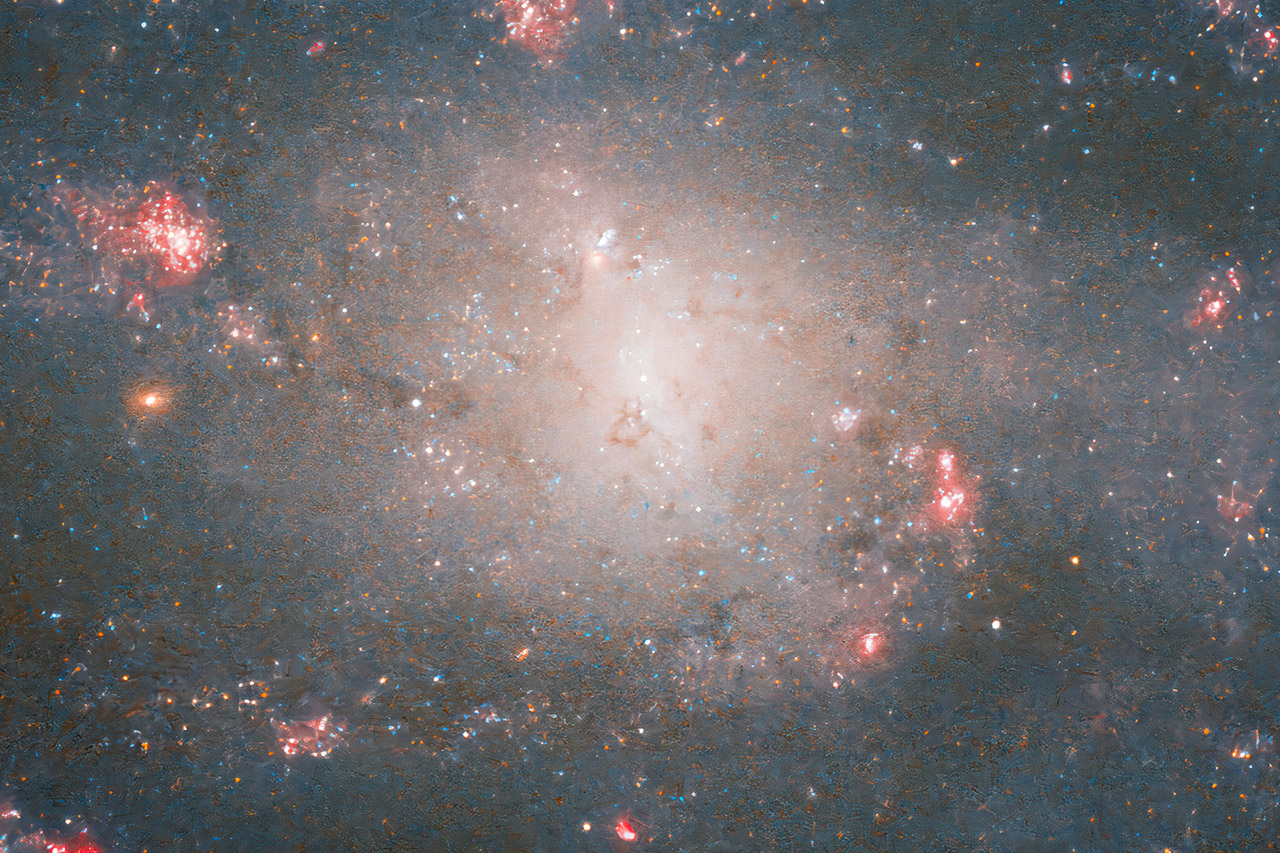
NASA / ESA’s Hubble Space Telescope observes an irregular spiral galaxy, designated as NGC 5486, threaded with ping wisps of star formation that stand out from its bright core. This glowing galaxy lies very close to the larger Pinwheel Galaxy, the latter of which is touted as a grand design spiral galaxy.

NGC 5486 is located approximately 110 million light-years from Earth in the constellation Ursa Major and was discovered in a series of Hubble images that were being studied for the debris left behind by Type II supernovae. This irregular galaxy does not have a distinct regular shape and do not fall into the typical classes of Hubble sequence. They are often chaotic, with neither a spiral arm structure or a nuclear bulge.
- POWERFUL REFRACTOR TELESCOPE: The Celestron AstroMaster 70AZ is a powerful and user-friendly refractor telescope with fully coated glass optics, a...
- HIGH-QUALITY 70MM OPTICS: Our Celestron telescope features a powerful, fully coated 70mm glass optic objective lens. Erect image optics allow you to...
- QUICK SETUP and LIGHTWEIGHT FRAME: This telescope for adults features a lightweight frame and a panning handle with Alt-Az control for smooth and...
As massive stars reach the end of their lives, they cast off huge amounts of gas and dust before ending their lives in titanic supernova explosions. NGC 5486 hosted a supernova in 2004, and astronomers used the keen vision of Hubble’s Advanced Camera for Surveys to explore the aftermath in the hopes of learning more about these explosive events,” said NASA.







